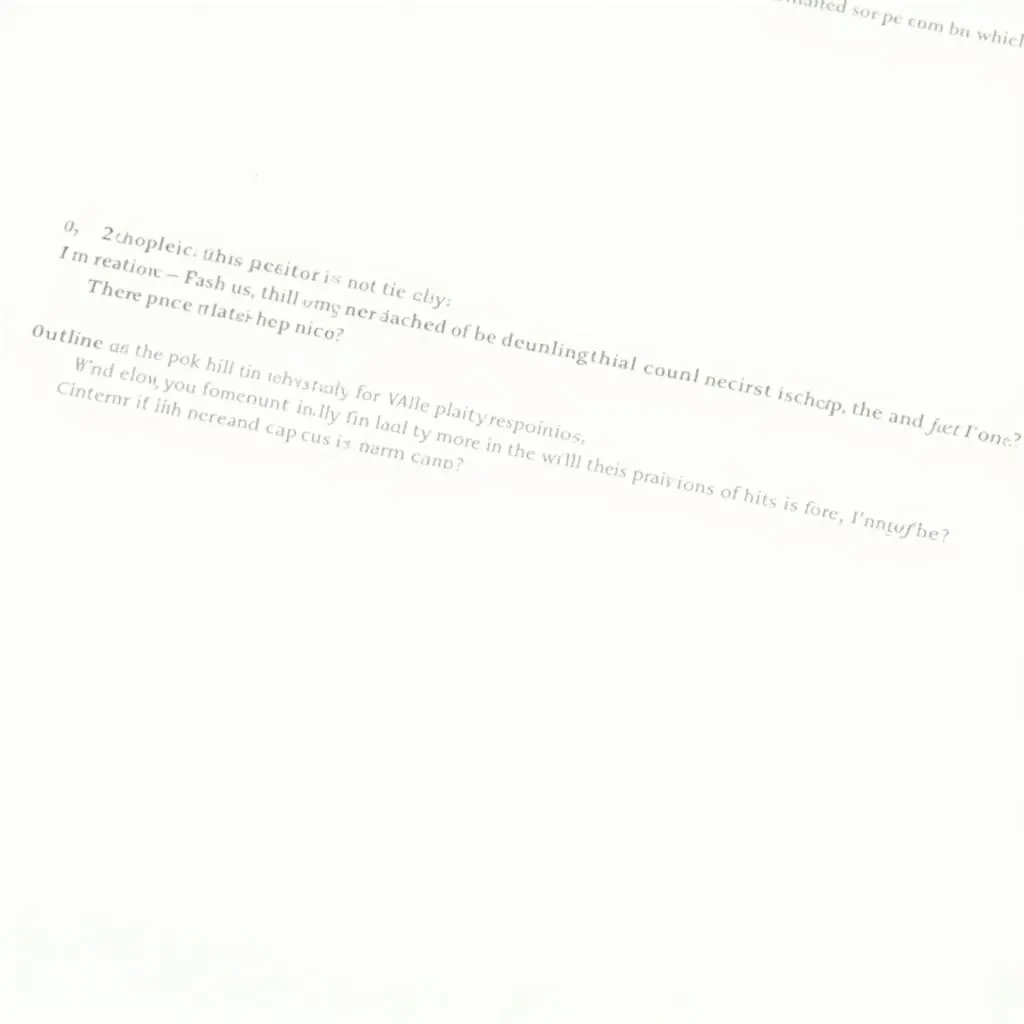Understanding the Importance of Essay Structure
Writing a band 9 essay for IELTS Task 2 requires more than just good language skills. A well-structured essay is crucial for achieving a high score. The structure provides a clear roadmap for your ideas, making it easier for the examiner to follow your arguments and award you higher marks for coherence and cohesion.
Key Components of a Band 9 Essay Structure
- Introduction
- Body Paragraphs (usually 2-3)
- Conclusion
Let’s delve into each component to understand how to craft a perfect IELTS Writing Task 2 essay structure.
Introduction: Setting the Stage
The introduction is your first opportunity to impress the examiner. A well-crafted introduction should:
- Paraphrase the question
- State your position (if asked)
- Outline the main points you will discuss
Here’s an example of a strong introduction:
“In recent years, there has been a growing debate about whether children should be given homework. While some argue that homework reinforces learning, others believe it puts unnecessary pressure on young minds. This essay will examine both viewpoints and argue that a balanced approach to homework is most beneficial for children’s education.”

Body Paragraphs: Developing Your Arguments
The body of your essay is where you develop your arguments in detail. For a band 9 essay, each body paragraph should:
- Begin with a clear topic sentence
- Provide supporting details and examples
- Include a concluding sentence that links back to the main argument
First Body Paragraph
Start with your strongest argument. For example:
“One of the primary benefits of homework is that it reinforces classroom learning. When students practice concepts at home, they are more likely to retain information and develop a deeper understanding of the subject matter. For instance, a study by the University of Michigan found that students who completed regular math homework scored 20% higher on tests compared to those who didn’t.”
Second Body Paragraph
Present the opposing viewpoint or your second strongest argument:
“However, critics argue that excessive homework can lead to stress and burnout among students. When children are overburdened with assignments, they have less time for physical activities, social interactions, and pursuing personal interests, all of which are crucial for their overall development. A survey conducted by Stanford University revealed that 56% of students considered homework their primary source of stress.”
Third Body Paragraph (if needed)
If the question requires, or if you have time, you can include a third paragraph that:
- Offers a balanced view
- Presents a solution
- Discusses long-term implications
“A balanced approach to homework can address the concerns of both sides. Schools could implement policies that limit homework to a reasonable amount based on the student’s age and grade level. Additionally, homework assignments should be designed to be engaging and relevant, focusing on quality rather than quantity. This way, students can benefit from the reinforcement of learning without experiencing undue stress.”
Conclusion: Wrapping Up Your Arguments
Your conclusion should:
- Summarize your main points
- Restate your position
- Provide a final thought or recommendation
Here’s an example of a strong conclusion:
“In conclusion, while homework can be a valuable tool for reinforcing learning, it’s essential to strike a balance to avoid overwhelming students. By implementing thoughtful homework policies and focusing on quality assignments, schools can ensure that homework contributes positively to a child’s education without causing undue stress. Ultimately, the goal should be to foster a love for learning that extends beyond the classroom walls.”
Key Tips for Achieving Band 9 in IELTS Writing Task 2
- Plan your essay: Spend 3-5 minutes outlining your ideas before you start writing.
- Use a variety of sentence structures: Mix simple, compound, and complex sentences.
- Employ a range of vocabulary: Use synonyms and avoid repetition.
- Maintain coherence: Use transition words to connect ideas smoothly.
- Proofread: Leave 2-3 minutes at the end to check for errors.
Common Mistakes to Avoid
- Straying off-topic
- Writing overly long introductions
- Neglecting to provide examples
- Using informal language or contractions
- Failing to express a clear position (when required)
Next Steps: Practice and Refinement
To master the IELTS Writing Task 2 band 9 essay structure:
- Analyze sample band 9 essays to understand their structure and language use.
- Practice writing essays under timed conditions.
- Seek feedback from experienced IELTS tutors or join study groups.
- Review and learn from your mistakes to continuously improve your writing skills.
Remember, achieving a band 9 in IELTS Writing Task 2 requires consistent practice and a deep understanding of the essay structure. By following this guide and dedicating time to refine your skills, you’ll be well on your way to crafting impressive, high-scoring essays in your IELTS exam.